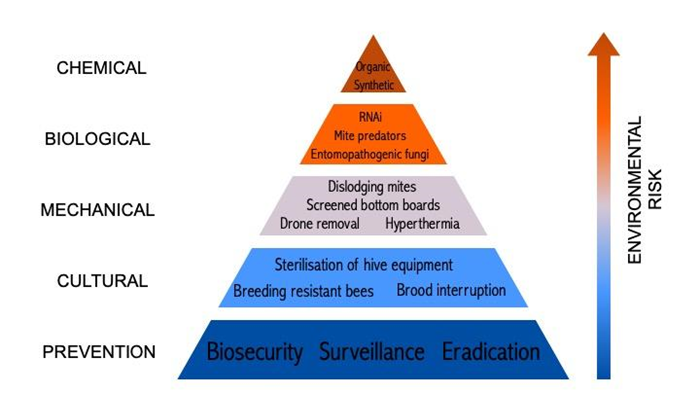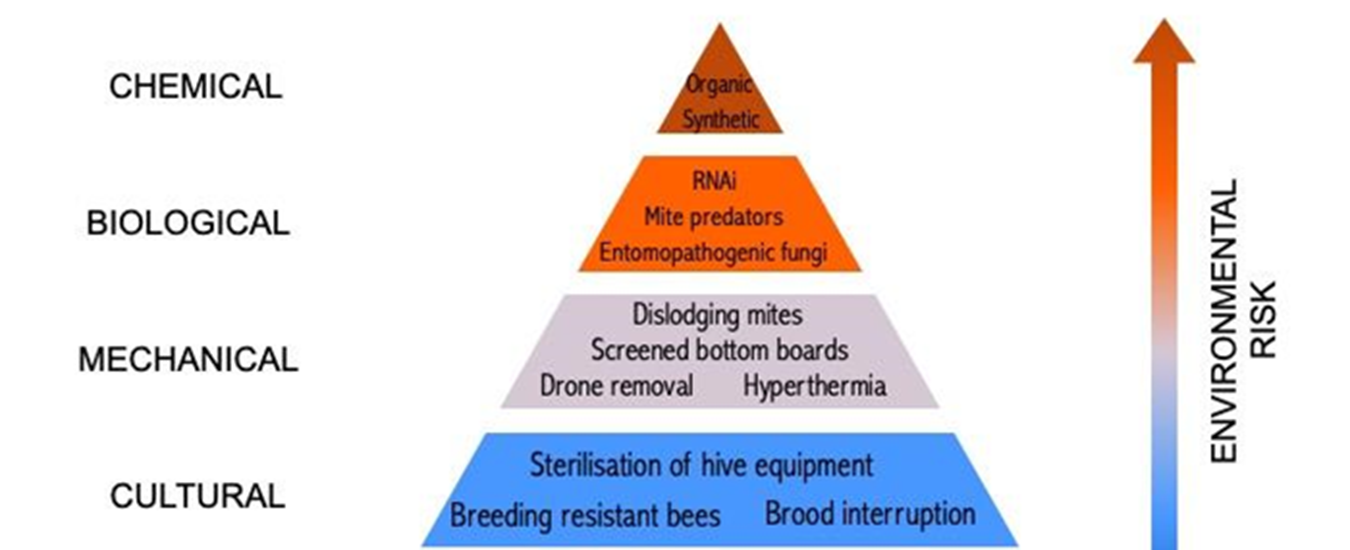With Varroa now on our shores, Australian beekeepers have a steep learning curve to understand how to live with the mite. Fortunately, beekeepers worldwide have been living with Varroa for decades, there are many treatment and management strategies that can help beekeeping businesses to continue to flourish.
As with all pest management, it’s important industry and government recommendations are followed, ensuring an approach that will be of the greatest benefit to Australia’s honey bee industry. Implementing integrated pest management (IPM) strategies from the very beginning will ensure beekeepers maximise bee health while minimising the impact of Varroa.
IPM is a sustainable approach to pest management that aims to reduces costs, labour, effects on bees, and residues in hive products, allowing the honey bee industry to remain strong. IPM works on the principle that the presence of a pest organism is tolerable if it remains below the threshold at which a farmer begins to suffer economically.
Beekeepers should firstly identify the economic threshold (i.e. the point at which management becomes necessary to avoid losing hives), and regularly monitor pest populations, so they can respond appropriately.
By employing practices and treatments that keep mite numbers down without relying on synthetic chemicals, beekeepers can preserve the usefulness of these chemicals. If used incorrectly, chemicals — organic and synthetic — can be harmful to bees and humans.

Figure 1: An integrated pest management framework for the control of Varroa destructor. The greater the estimate population of mites in a colony, the greater the beekeeper’s risk of economic damage. Thus more drastic treatment measures become justified as the mite population estimate and therefore risk increases.
An IPM pyramid (Figure 1) can be implemented to minimise the impacts of varroa. The first step is prevention and surveillance. Beekeepers need to regularly assess their colonies for the presence of mites, and if present, assess the degree of infestation. With regular mite checks, beekeepers will be able to identify infestations early. A variety of mechanical and cultural treatments can be used to reduce mite numbers or keep them at low levels so they do not become a problem.
If the infestation is too advanced for these measures to be effective, or if the measures fail to reduce mite numbers, the use of chemical treatments is justified. However, the goal of IPM is preventative and to take early actions to maintain colony health.
Employing an IPM pyramid, and monitoring infestation levels, will ensure beekeepers can minimise chemical use, maintain colony health, and help preserve the usefulness of synthetic chemicals for the benefit of the honey bee industry. Mite monitoring after any treatment is also important to ensure the treatment has been effective.
More information
- Agrifutures Australia – Varroa Integrated Pest Management Factsheet – https://honeybee.org.au/wp-content/uploads/2024/05/AGF575-IPM-S1V2-corrected.pdf
- AgriFutures on Air – Integrated Pest Management Podcast Episode 5 https://www.buzzsprout.com/1085570/episodes/15111977
Acknowledgements:
- Resilient beekeeping in the face of Varroa. AgriFutures Australia. Holmes, Gerdts, Grassl, Mikeheyev, Roberts, Remnant and Chapman.
- Varroa – integrated pest management. AgriFutures Australia and AHBIC. Holmes, Gerdts, Grassl, Mikeheyev, Roberts, Remnant and Chapman.
- This article was peer-reviewed by Jody Gerdts and Nadine Chapman.


